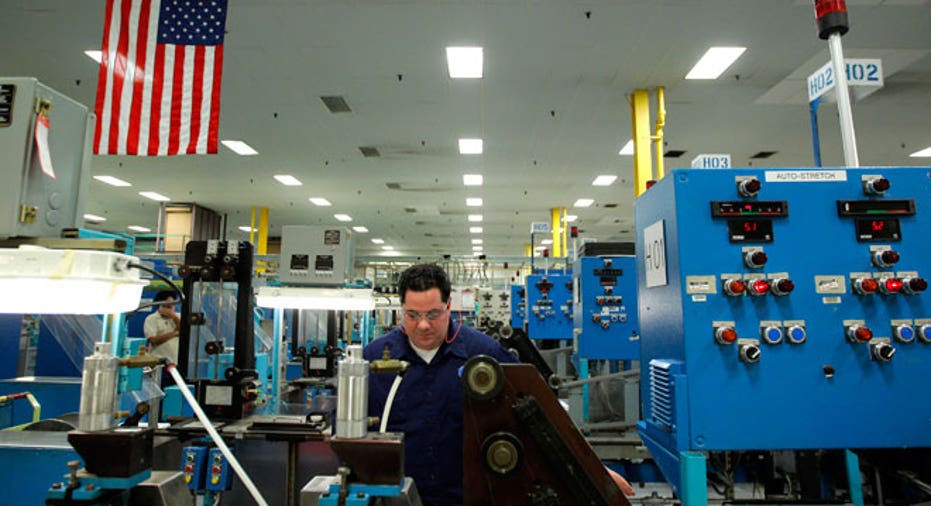Not Everyone Certain of 2Q Rebound

The strength of the second quarter rebound will determine the timing of interest rate hikes, analysts said Friday following the widely-expected release of GDP numbers that showed the U.S. economy shrank during the first quarter.
That’s assuming the economy rebounds in the second quarter.
“From a policy perspective, the first quarter lull is already history; it’s the extent of the rebound that will be critical in determining the timing of the Fed’s first move on interest rates,” said Chris Williamson, chief economist at research firm Markit.
The government on Friday slashed its gross domestic product – or the total value of all goods and services produced in the U.S. -- estimate to show it contracted at a 0.7% annual rate rather than growing at a 0.2% rate as was estimated last month.
Most economists are counting on that rebound.
“Because everyone is aware of the residual seasonality in the Q1 report, everyone is now looking past this data to a Q2 GDP rebound,” Steven Ricchiuto, chief economist, at Mizuho Securities said in a note. “Everyone is already calling for a snap back in the current quarter.”
US Real Gross Domestic Product | FindTheData!function(d,s,id){var js,fjs=d.getElementsByTagName(s)[0],p=/^https:/.test(d.location)?'https':'http';if(!d.getElementById(id)){js=d.createElement(s);js.id=id;js.src=p+"://cdn1.findthebest.com/rx/widgets.js";fjs.parentNode.insertBefore(js,fjs);}}(document,"script","ftb-widgetjs");
A larger trade deficit and a smaller accumulation of inventories by businesses was blamed for the 1Q contraction. Consumers also spent less than previously believed despite lower gas prices that put more money in consumers’ pockets. Consumer spending accounts for about 70% of the U.S. economy.
If current consensus estimates of second quarter GDP hold at about 2% the economy would see its worst first-half performance since 2011.
The Federal Reserve, which is closely monitoring a handful of bellwether economic indicators including GDP to determine the best timing for a rate hike, has repeatedly shrugged off the weak first quarter, citing “transitory” or temporary factors such as harsh winter weather and a California dock strike that disrupted supply chains.
In speeches and in official statements, Fed officials have suggested a rate hike in 2015 is still likely because the economy is poised to rebound from the soft first quarter.
Williamson isn’t so sure.
“The extent of the decline in the first quarter is therefore of little concern. After all, the bigger the drop, the stronger the rebound, right?” he asked rhetorically. “Not necessarily. Some economic activity is lost forever due to events such as extreme weather, and not replaced when conditions improved.”
Williamson cited examples such as trips to the movies and restaurant meals.
In addition, the analyst said manufacturing surveys are showing that the strong U.S. dollar is hurting the important manufacturing sector by making exports more expensive and imports cheaper. The strong dollar is also negatively impacting the earnings of companies when their overseas profits are converted back into dollars.
Williamson isn’t the only economist skeptical of knee-jerk rosy second-quarter forecasts.
Last month economists at the Federal Reserve Bank of Atlanta released their forecast for second-quarter economic growth – and it was ugly.
Using a sophisticated forecast model called GDPNow, the Atlanta Fed predicted that second-quarter GDP will clock in at 0.9%. That’s well below the 2% estimate many economists have been forecasting.
The Atlanta Fed’s second-quarter GDP prediction is worth paying attention to because they nailed their prediction on the initial dismal first-quarter GDP number.
The Atlanta Fed correctly predicted weeks ago that first-quarter GDP would be much worse than the 1% consensus offered by economists. The estimate from the Atlanta Fed was 0.1%, or slightly lower than the actual GDP of 0.2% reported by the Commerce Department.